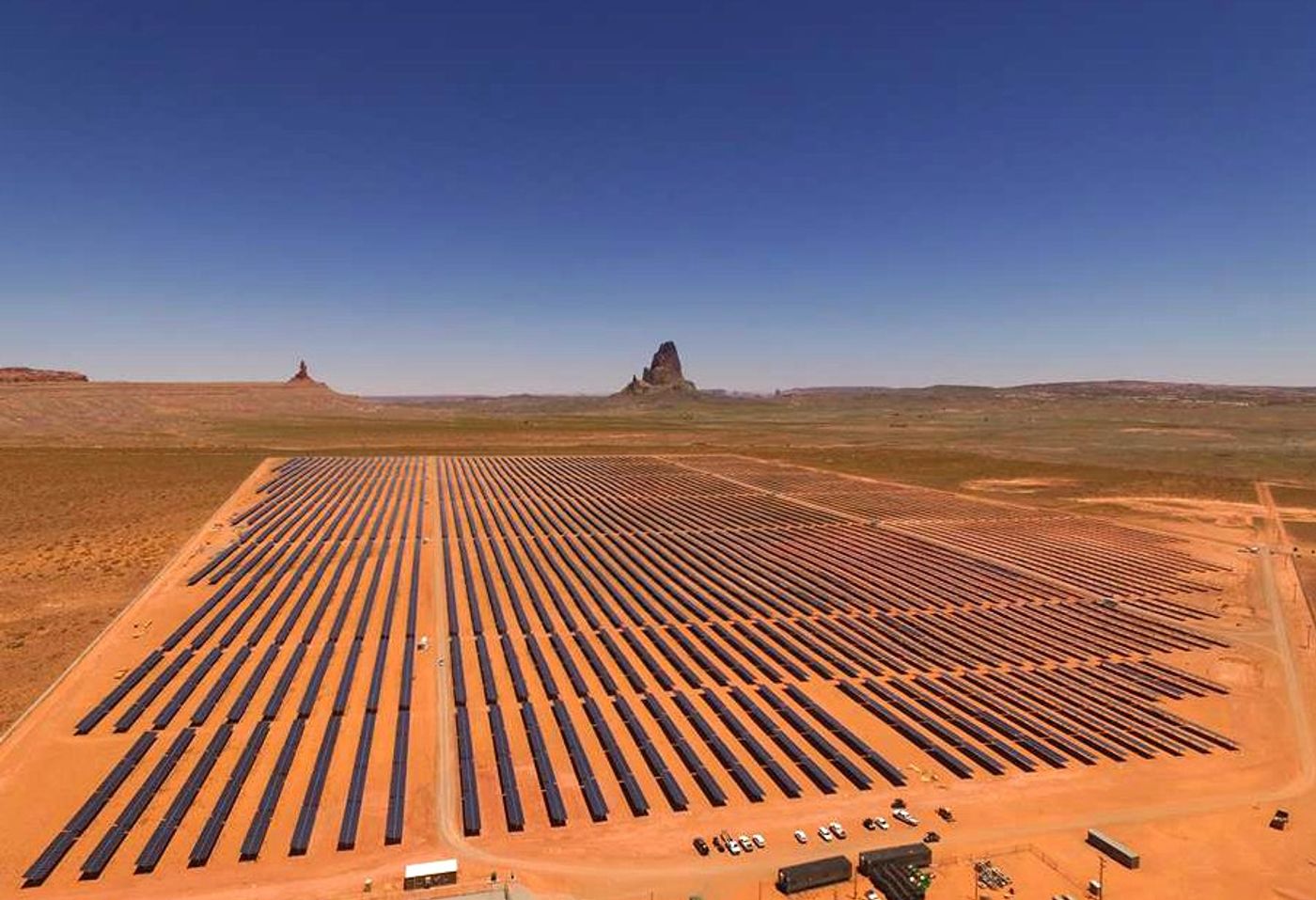Navajo Nation Embraces Solar as Major Coal Plant Shuts Down
The Navajo Nation has long been a major energy provider for the Southwest but has not had widespread access to electricity for its residents. The Nation is branching into solar power to fulfill its energy needs.
While the Navajo reservation has held three of the biggest coal-fired power plants in the West and experienced the related pollution, many of its residents have not been able to afford access to the power grid. At the turn of the millennia, it had the least power of all reservations and in 2004, 18,000 of its 48,000 homes lacked electricity, as this Cronkite News video explains. Considering this situation and the imminent closing of one of the main power plants, the Navajo Nation, along with other tribes, is experimenting with going solar.
Diné Bikéyah, or Navajoland, covers 27,000 square miles through Utah, Arizona and New Mexico and is about the size of West Virginia and larger than 10 of 50 states. Jihan Gearon, Executive Director for the Black Mesa Water Coalition, refers to it as the “battery for the Southwest.” Its 173,000 residents live at a density of about 10 people per square mile. It can cost about $35,000 to expand the traditional grid 1 mile, leaving many without power and making solar a wise option.
“It’s really great to see customers get utility services for the first time,” says Navajo Tribal Utility Authority (NTUA) District Manager Vircynthia Charley, who regrets she was not able to help her grandparents have this experience during their lifetime. The NTUA program began providing solar power systems to residents in 1999. These systems often offered limited power – residents had to choose which appliances to use and focus on essentials like keeping medicine refrigerated.
The Nation has operated the coal-fired Navajo Generating Station since the 70s. As the cost of other energy sources like natural gas continue to fall, it’s now scheduled to close in 2019. Navajo President Russell Begaye says this loss of the plant and more than 700 jobs forces the Nation to “make a huge paradigm shift,” for which he will help them prepare.
The Navajo Tribal Utility Authority recently got the Kayenta Solar Project online -- a 27.5-MW solar farm on 300 acres in northeastern Arizona. This solar farm will power 7,700 homes, many of which will be getting power for the first time. During construction, about 80 percent of the employees were Navajo. First Solar operates the farm from Tempe but the Nation is developing plans to run the plant itself. According to the NTUA Facebook page, this “100 percent-owned Navajo project will enhance clean energy initiatives of the Navajo Nation and NTUA.”
Solar farm project manager Glenn Steiger says the hole left by the Navajo Generating Station will “ultimately will be filled with renewable energy, whether it's solar or wind.”
The Department of Energy and Mineral Development offers solar development grants to tribes along with solar-transition assistance. The nonprofit GRID Alternatives helps tribes find solar funding, assists with installation and offers solar power training at tribal colleges.
Other tribes in the 567 federally recognized American Indian Tribes and Alaska Natives in the United States have gone solar, in part, as well. The Sokaogon Chippewa Community in Wisconsin has teamed up with SunVest Solar and Current Electric to bring solar to about 50 homes and 20 commercial properties, through a grant from the U.S. Energy Department and Department of Housing and Urban Development.
The Hoopa Valley Tribe in California added a solar carport with energy storage to run the tribe’s community center, which was financed by JLM Energy. Also in California, the Chemehuevi Tribe’s community center now has a 90-kW solar array and 125 kWh of energy storage, provided by EnSync Energy and with state funding through The University of California Riverside’s Southern California Research Initiative for Solar Energy.
The Southern Ute Tribe in Colorado, Washoe Tribe in Nevada, Leech Lake Band of Ojibwe in Minnesota, and Moapa Band of Paiutes in Nevada have also added solar power to their infrastructures.
Thomas Walker Jr., Community Peacemaker of the Navajo Nation’s Bird Springs Chapter sees the integration of solar energy into the reservation as a natural process. He refers to Navajoland as a place “where nature rules,” and where, as the Earth and Sun provide, the people “consent and receive with appreciation.”
…
Sources:
https://www.youtube.com/watch?v=WJt0-YUZW6o
http://www.navajo-nsn.gov/index.htm
https://www.solarpowerworldonline.com/2017/08/native-american-tribes-solar/









